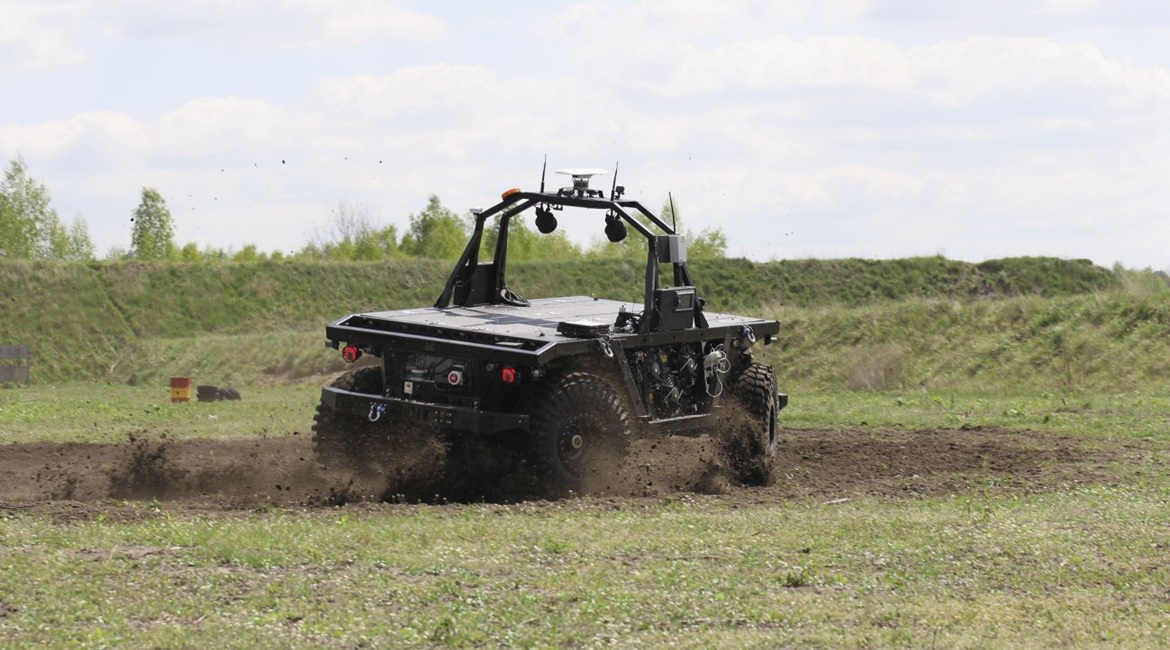
Warsaw-based Łukasiewicz Research Network-Industrial Research Institute for Automation and Measurements PIAP (Łukasiewicz-PIAP) has revealed a prototype of the Hunter unmanned ground vehicle (UGV). The 3.5-tonne multirole UGV is designed to conduct patrols and reconnaissance, and provide support to troops in hazardous areas.

Polish firm Łukasiewicz-PIAP has revealed the Hunter UGV. (Łukasiewicz-PIAP)
Hunter’s 4x4 chassis measures 4.7 m long and 2.2 m wide and features two steering axles – each integrated with an electric motor – with a 3-link Panhard suspension. This arrangement enables it to attain a maximum road speed of 50 km/h, and traverse cross-country terrain and obstacles.
It is equipped with a 110 kW generator that provides power to its motors and provides on-board power generation for equipment that requires 600V DC, 400V AC or 24V DC supply.
A GPS receiver, two lidars, four hull-mounted high-definition (HD) navigation cameras, and a suite of five additional HD cameras – including a remotely operated pan, tilt, zoom (PTZ) camera – are distributed around the vehicle and its robotic arm.
This set of sensors enables Hunter to perform autonomous or semi-autonomous navigation, with the company stating that the UGV can plan and execute a patrol route while recognising and avoiding major obstacles using user-preset GPS waypoints. The vehicle can also be remotely controlled, with the operator equipped with a steering wheel and pedal console that has been designed for intuitive control.
The UGV can also be equipped with a range of support equipment, including a hydraulic arm and cargo crates. It can also be fitted with ground-penetrating radar to support army engineering units.
Looking to read the full article?
Gain unlimited access to Janes news and more...






